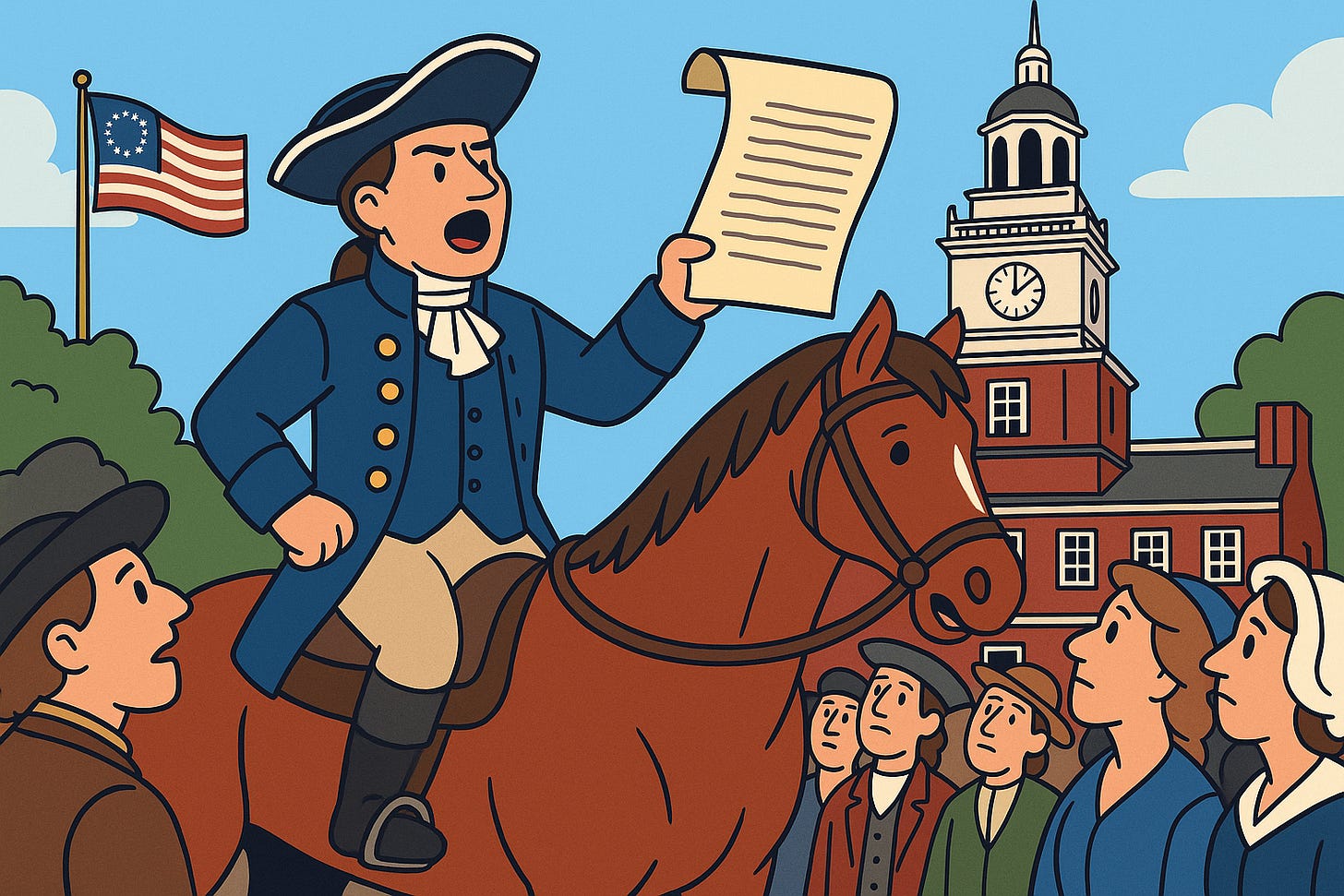America’s 249th Birthday: A Legacy Worth Celebrating
The Declaration’s First Reading in 1776 Ignited a Nation’s Resolve for Liberty
🕒 3 min read
On July 8, 1776, Colonel John Nixon read the Declaration of Independence aloud to a crowd in Philadelphia’s State House Yard, marking its first public proclamation. Summoned by the Liberty Bell’s ring, citizens gathered to hear the bold words of defiance against British rule. This moment, less heralded than the signing, galvanized colonists, spreading the revolutionary spirit across the nascent nation.
Who Was John Nixon?
John Nixon, born in 1733 in Philadelphia to a prominent shipping merchant family, emerged as a key figure in Pennsylvania’s revolutionary efforts. A dedicated member of the Committee of Safety, he served with distinction as a lieutenant-colonel in the Third Battalion of Associators. He commanded the Delaware River defenses with strategic acumen. His civic stature and exceptional oratorical skills made him a natural choice to read the Declaration to the assembled masses. Appointed by the Sheriff of Philadelphia for this historic duty, Nixon’s reading on July 8, 1776, transformed abstract ideals into a public call for rebellion, stirring the crowd to cheer enthusiastically for the “free states of North America.”
A Defiant Beginning
The Declaration, adopted on July 4, 1776, represented a daring act of treason against the British Crown. Drafted by Thomas Jefferson and carefully edited by John Adams and Benjamin Franklin, it boldly asserted the colonies’ inherent right to self-governance. Nixon’s reading in Philadelphia proved pivotal, transforming carefully crafted words into decisive action. Copies of the Declaration, printed by John Dunlap with meticulous attention to detail, were dispatched to all 13 colonies, where public readings in town squares, churches, and military camps further fueled the revolutionary fervor sweeping the land. The phrase “all men are created equal” inspired ordinary people to risk everything for the cause of freedom. This anniversary underscores that liberty began with individual courage, not collective consensus.
The Power of Ideas
The Declaration’s fundamental principles—life, liberty, and the pursuit of happiness—were radical in 1776, challenging established monarchies worldwide with revolutionary implications. Today, they urge us to guard vigilantly against the encroachment on personal freedoms, whether from expanding bureaucracies or dangerous ideologies. Nixon’s reading was not merely a performance but a clarion call to defend natural rights with unwavering resolve. As copies reached each colony, from Massachusetts to Georgia, public readings unified diverse communities under a shared vision of independence, amplifying the document’s transformative impact across the continent.
A Living Legacy
The first reading by Nixon sparked a revolution that changed the world, and its message endures with undiminished power. Public readings of the Declaration cemented a sacred commitment to self-governance and individual liberty from Philadelphia to every corner of the new nation. On this Fourth of July, we celebrate not just a historical date but a timeless call to vigilance and civic responsibility. The 249th anniversary invites us to renew our dedication to the principles that birthed a nation, one striving eternally to be a “more perfect union.”



